
The pistol grip shifter has to be among the most iconic features of any automobile from the muscle car era. First available in 1970, it was in the right hand of heyday owners to row their own in anything from 6BBL ‘Cudas to Hemi Superbirds. For B-bodies, a long, crooked, chrome stick rose well above floor level as an outrageous yet entirely functional gear selector.
E-body brethren received a stubbier version, but had the same woodgrain handle adorning the top end. Its lifespan was short-lived but left enough of a mark on muscle car culture to still be instantly recognizable while standing guard over both A833 4-speeds and modern overdrives alike.
A quick look at the history of factory-supplied Chrysler shifters finds little out of the ordinary from 1964 through 1969. Over those years, black, white, and woodgrain balls were the grab of choice. A few manufacturers offered OEM T-handles, but Mopar left that to the speed shops. Shifter sticks were largely just as plain. Console-equipped applications required slightly different attachment angles on the mechanism side, while non-console sticks were fairly straightforward with a slight arch towards the rear of the car for dash clearance in first, third, and reverse.
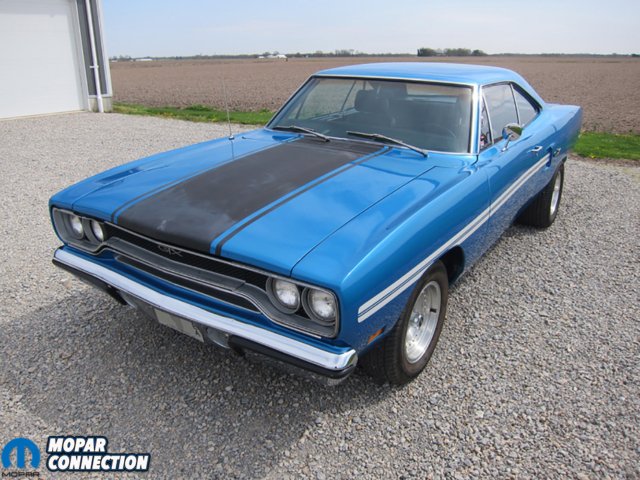
Above: This ’70 GTX was B5 beautiful on the outside, but needed an upgrade on the inside in the form of a brand new Hurst pistol grip shifter.
For the most part, Chrysler was faithful to the Hurst mechanism after the 1964 model year and, internally, they were all very similar. Major differences amounted to shift lever length or handle mounting scheme. Both bolt-on and “bayonet” styles were offered for stick attachment.
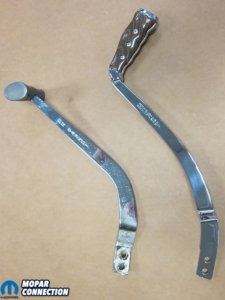
You can see the slight difference in shape between the T-handle and pistol grip shifters.
“Bayonet” referred to a bolt-less, slip-in style with a drop-in retainer to keep the stick in place while bolt-on versions, obviously, used a couple of hex heads. Lever lengths varied based on year and body style.
The 1970 B-body mechanism for pistol grips, for example, featured slightly different levers to shorten the throw and give knuckles a bit of breathing room between the handle and the dash.
Of course, we’d be remiss to leave the Inland mechanism out of the conversation. For whatever reason, Chrysler stepped out on Hurst in 1966 but, by early 1968, Mopar muscle car buyers were fed up with it.
Budget-friendly cars like the Road Runner were made for go-fast gear heads that were well-aware of the Inland unit’s shortcomings. Public pressure and poor reviews were probably the brunt of the reason that Mopar rekindled the flame with Hurst in mid-’68 and didn’t look back.

Above: Our new pistol grip shifter from Hurst.
Above Left: The correct shifter boot and trim ring we sourced from Year One. Above Right: You can see the non-stock shift boot and t-handle shifter.
Everything changed in 1970 with the advent of the pistol grip. Stylistically, it was far more sleek and sexy than any other OEM was offering. Functionally, it was more ergonomic and sure-handed than many of its predecessors. Why the A- and C-body models were never offered with it will forever be a mystery. Even still, through 1974, it was at the helm of every 4-speed-equipped B- and E-body. Shortly thereafter, the muscle car era was dead and so was the factory pistol grip.
When this 1970 Plymouth GTX showed up at our shop with an aftermarket T-handle poking up through the hump in the floor, we knew it had to go. Something just didn’t feel right about it after peeking in the window and expecting to see that long, slender, chrome shaft with a touch of faux woodgrain. Luckily, components are still available to get cars like this GTX looking factory fresh.
Our first call was to Hurst for a brand-new stick assembly (P/N 5388585), complete with side plates and 4-speed pattern indicator. The old universal shift boot was used and abused, so the next call was to Year One for a proper boot (P/N K1), trim ring (P/N MM1101), and hardware (P/N SN735).
Above Left: We tore into the shifter mechanism to see if it needed replaced. Above Right: We had a bayonet style mechanism laying around and wanted to show you the difference between the two.
Above Left: You can see the 1/4″ bolt we stuck in to keep all the linkage in neutral while we adjusted each gear. Above Center: Each linkage can be adjusted by screwing the mount in or out. Above Right: We were able to align all the linkage perfectly.
Removing that old boot and trim ring was the first course of action. As expected, the home-made trim ring’s bolt pattern did not match that of the correct oval trim ring. However, peeling back the carpet revealed the proper hole pattern underneath. With no console, the GTX simply required a standard oval boot with a rectangular handle cutout. However, several different boot sizes and shapes were available for various factory applications.
Late-1968 and 1969 B-bodies without a console would have used a similar boot but with a circular cutout for the round, ball-topped Hurst shifter handle. Had our ’70 B-body been equipped with a console, it would have required a different shifter handle, an upper boot, and a trim ring to fill the rectangular hole in the console’s top panel. Of course, Year One has pretty much every combination available.
Above Left: The Hurst pistol grip shifter shown with the proper shifter boot with the square hole to fit the profile of the shifter. Above Right: With one little tweak, the GTX looks a thousand times better in our eyes.
With the car on the lift, we decided to go ahead and remove the crusty shifter mechanism for closer inspection. It looked to be a run-of-the-mill, parts store Hurst mechanism and was only missing its necessary stiffener plate (P/N 1950055). Aside from the shifter handle attachment point and location of the center lever, it was similar to a bayonet Hurst shifter we had laying around.
As mentioned previously, pistol grip-equipped 1970 B-bodies actually had their very own special Hurst mechanism to account for the extra length of the big handle. This is important to keep in mind when trying to install a pistol grip without that specific mechanism; there is a chance that knuckles will meet dashboard in an unkind fashion on a hard third-gear shift.
While that correct 1970 mechanism is available to be purchased new, we wanted to clean up and try out our existing shifter to see if there would be any interference. We were able to finagle the mounting bolts just enough to get a couple hairs of breathing room between the top of the handle and the dash. However, that won’t always be the case for every installation as a number of factors come in to play to determine clearance; engine location, shifter mechanism, shifter mounting plate, and body type are just a few.
Above: A quick glance of the before and after the Hurst pistol grip installation.
Once we were sure that no bloody-handed power shifts were in our future, we crawled back underneath to verify shifter setup. Most Hurst mechanisms incorporate a 1/4” hole for setup, so we lined up the mechanism levers, and slipped a 1/4” bolt in. With the transmission’s shift levers in neutral, the swivels on each rod were adjusted to fit and keepers were installed.
Before installing the shift handle for the final time, we slid the new boot on. Two bolts and eight screws later, the GTX was looking like 1970 again. Aside from the enhanced aesthetic appeal, we were actually impressed by the overall feel of the pistol grip compared to the previous handle. Being able to put the full force of shoulder, elbow, and arm into a shift with a set of 4:56 gears out back and a 440 under the hood is an experience unlike any other. We don’t mind taking some “show” with our “go” and the pistol grip will certainly provide both. Head over to Year One and Hurst for all your pistol grip needs.










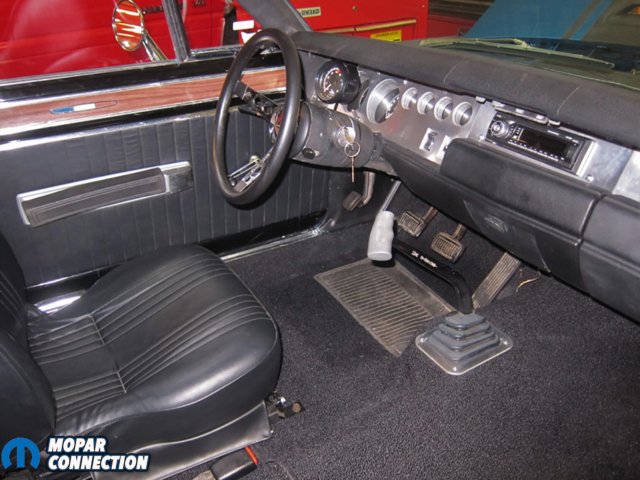
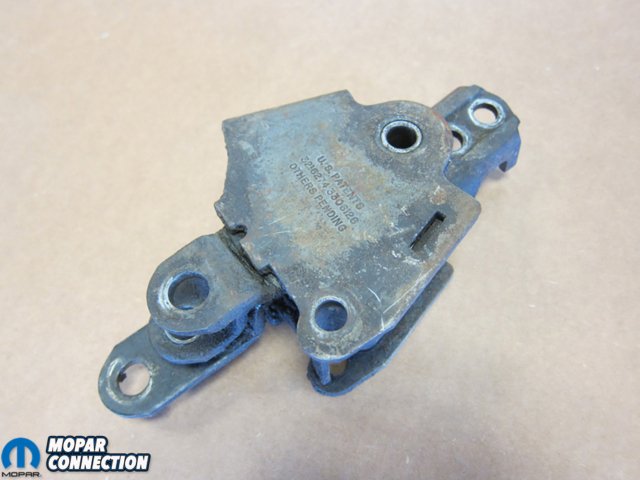
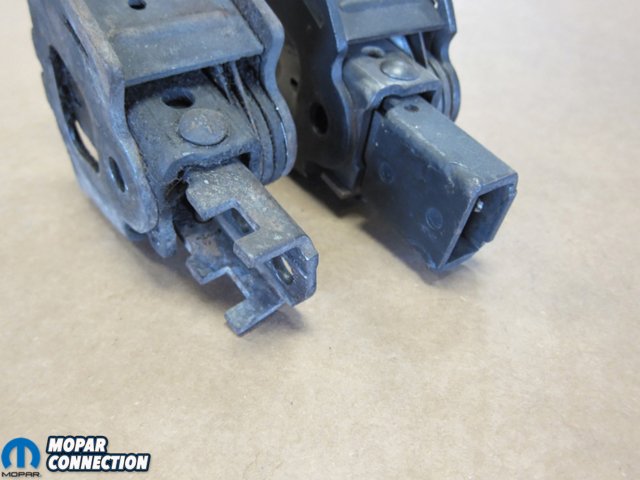
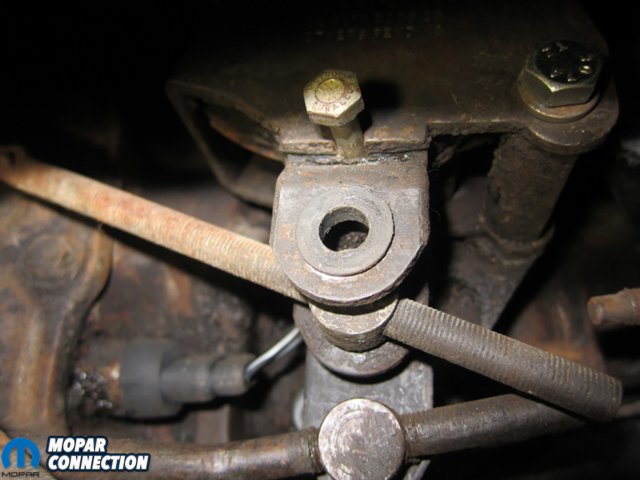

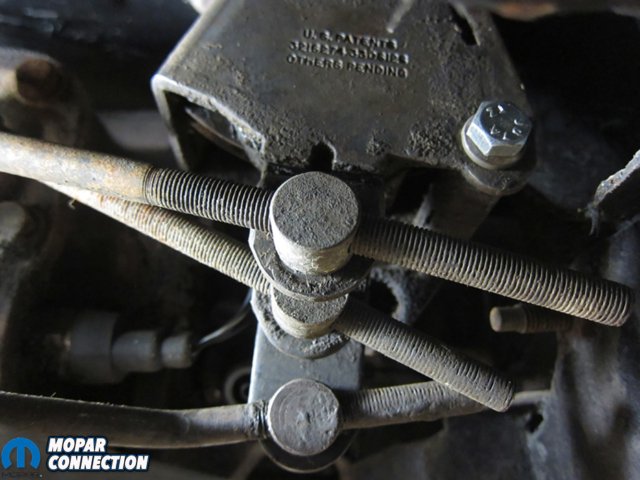


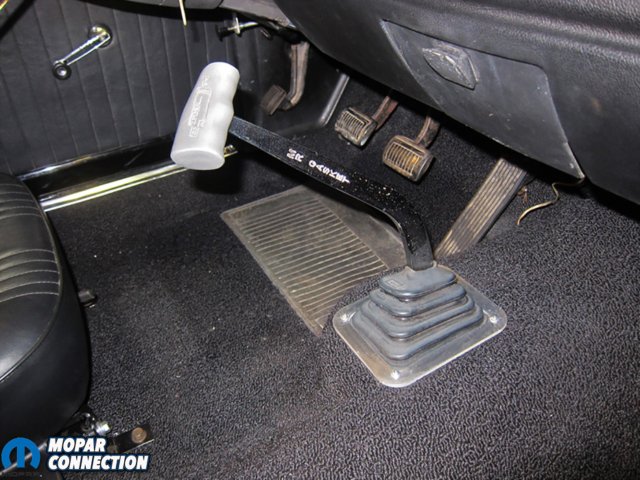

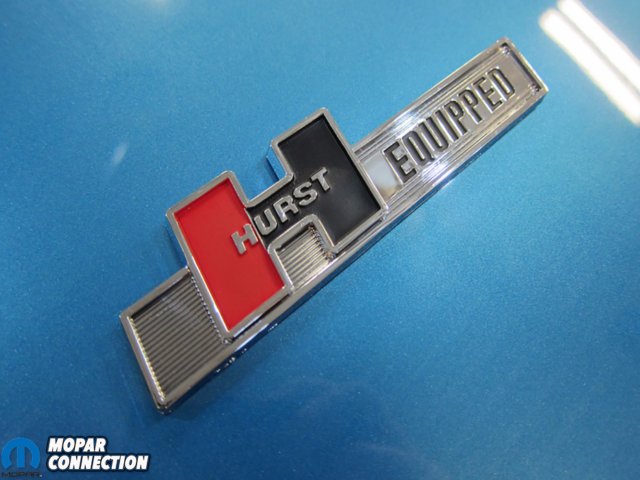
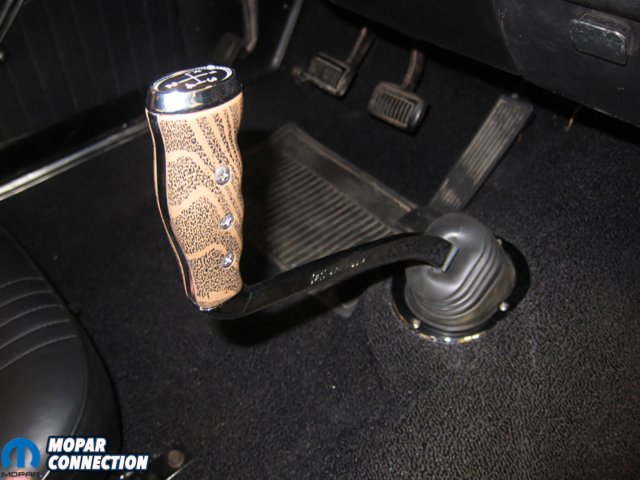




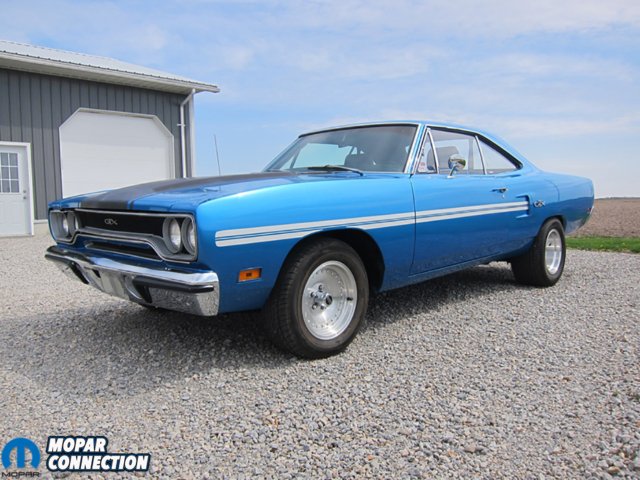



 Mopar Connection Magazine – The ONLY Daily Mopar Magazine © 2022. All Rights Reserved. Mopar Connection Magazine is the ONLY daily Mopar Magazine bringing you the latest Mopar news, technology, breaking news, and Mopar related events and articles. Find out the latest information about Mopar, Mopar products and services, stay up to date on Mopar enthusiast news, dealership information and the latest Mopar social media buzz! Sign up for the Mopar Connection Magazine newsletter for the latest information about new products, services and industry chatter. Mopar Connection Magazine is the best and only source you need to be a Mopar industry insider!
Mopar Connection Magazine – The ONLY Daily Mopar Magazine © 2022. All Rights Reserved. Mopar Connection Magazine is the ONLY daily Mopar Magazine bringing you the latest Mopar news, technology, breaking news, and Mopar related events and articles. Find out the latest information about Mopar, Mopar products and services, stay up to date on Mopar enthusiast news, dealership information and the latest Mopar social media buzz! Sign up for the Mopar Connection Magazine newsletter for the latest information about new products, services and industry chatter. Mopar Connection Magazine is the best and only source you need to be a Mopar industry insider! by
by